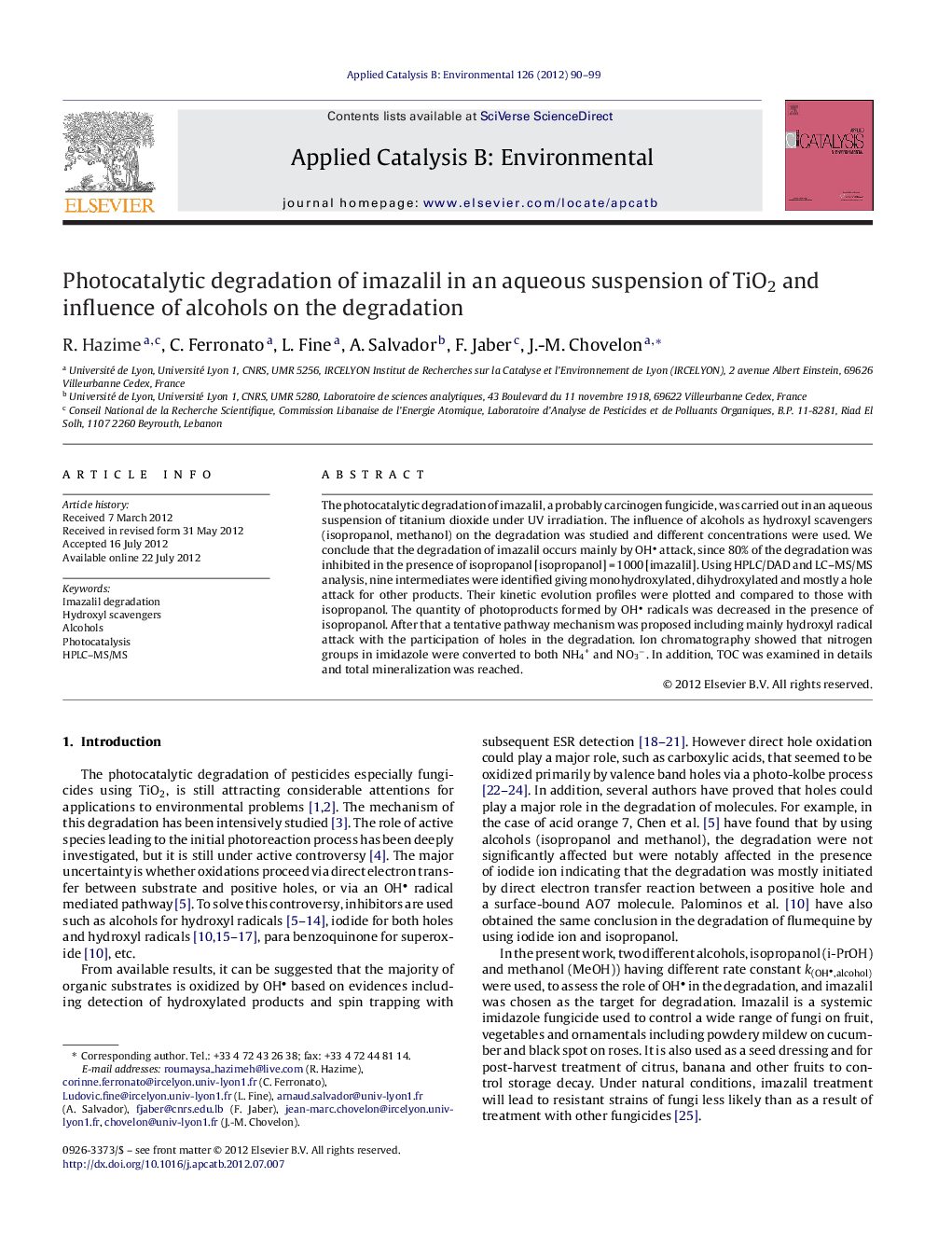| Article ID | Journal | Published Year | Pages | File Type |
|---|---|---|---|---|
| 46533 | Applied Catalysis B: Environmental | 2012 | 10 Pages |
The photocatalytic degradation of imazalil, a probably carcinogen fungicide, was carried out in an aqueous suspension of titanium dioxide under UV irradiation. The influence of alcohols as hydroxyl scavengers (isopropanol, methanol) on the degradation was studied and different concentrations were used. We conclude that the degradation of imazalil occurs mainly by OH attack, since 80% of the degradation was inhibited in the presence of isopropanol [isopropanol] = 1000 [imazalil]. Using HPLC/DAD and LC–MS/MS analysis, nine intermediates were identified giving monohydroxylated, dihydroxylated and mostly a hole attack for other products. Their kinetic evolution profiles were plotted and compared to those with isopropanol. The quantity of photoproducts formed by OH radicals was decreased in the presence of isopropanol. After that a tentative pathway mechanism was proposed including mainly hydroxyl radical attack with the participation of holes in the degradation. Ion chromatography showed that nitrogen groups in imidazole were converted to both NH4+ and NO3−. In addition, TOC was examined in details and total mineralization was reached.
Graphical abstractFigure optionsDownload full-size imageDownload as PowerPoint slideHighlights▸ Imazalil was totally degraded in an aqueous TiO2 suspension. ▸ Alcohols were used as hydroxyl radical scavenger, to assess the role of the latter in the degradation. ▸ Hydroxyl radicals play a major role in the degradation of imazalil. ▸ Nine intermediates were identified by HPLC–MS/MS. ▸ A mechanism of degradation has been tentatively proposed.
